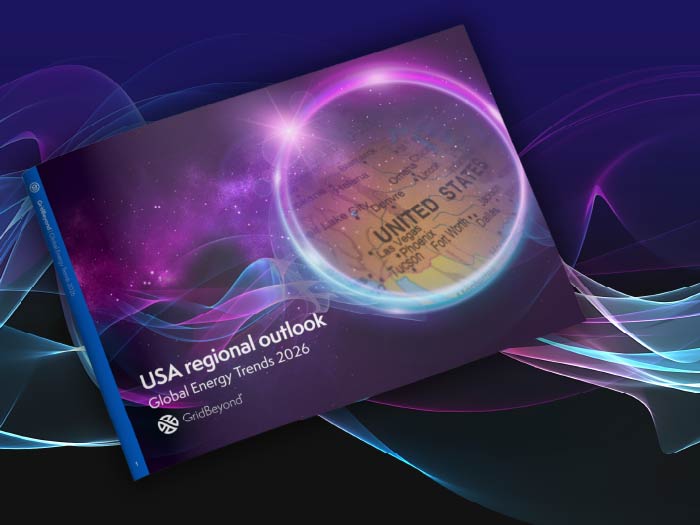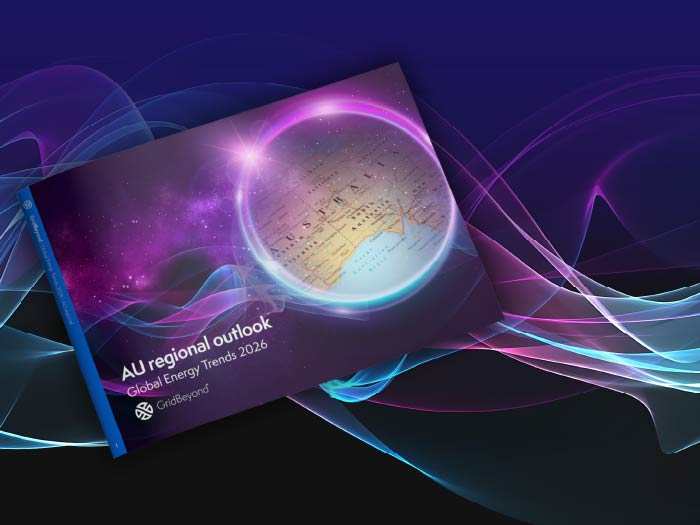Insights
better business decisions
Posted 3 years ago | 4 minute read

Managing wind volatility in Ireland with demand response
Wind Energy Ireland recently released its June Wind Energy report, which showed that wind energy provided 30% of Ireland’s electricity in June 2022, up 6% on June 2021. Since the start of the year 36% of Ireland’s electricity has come from wind. But what happens when the wind doesn’t blow? And how do EirGrid and SONI manage the system with reduced levels of generation available?
Weather impacts
This was demonstrated most recently between 10 July and 15 July. As extreme heat warnings take effect issued across much of Europe, wind generation in Ireland dropped to less than 3% of total generating capacity, in addition a number of key generation stations experienced outages across the week, due to a combination of planned outages, testing and faults. The result was that grid operators forecasted a shortfall on the system, which if not corrected could result in outages.
All-Island (Demand v Wind Forecast v Wind Out-Turn)

Source: EnAppsys
But the grid operators have several tools that can deployed in such situations to ensure the network has sufficient supply to meet demand. One of the key tools available is action through demand side response programmes.
In essence, demand response provides an opportunity for businesses to play a key role in the operation of the electricity grid by reducing or delaying their electricity usage when required.
Managing volatility
The role of the network operators is to ensure that Ireland is generating as much power as its consumers (commercial and domestic) are using and at a frequency suitable for customer use. For this to happen, they need to maintain the grid frequency at around 50Hz managing variations around this level that are caused by sudden changes in supply or demand.
The energy system is increasing reliance on renewable energy sources such as wind and solar, whose outputs are cleaner but less predictable than traditional sources like gas and coal. This means maintaining the grid frequency at 50Hz is becoming more challenging, which consequently increases the risk of supply interruptions. Demand side response programmes provides a solution towards this problem, while simultaneously enhancing your businesses energy strategy, helping you to optimise your energy usage and unlocking hidden revenues by temporarily reducing electricity demand on the grid.
Series of events
As a result of the tightening of the system between 10 and 13 July, the following events took place.
- Sunday 10th July – 17:22 to 19:20
- Tuesday 12th July – 12:30 to 13:55
- Tuesday 12th July – 17:30 to 19:30
- Wednesday 13th July – 10:00 to 10:45 (Electric Ireland Customers Only)
- Thursday 14th July – 17:30 to 19:00
- Friday 15th July – 17:30 to 19:30
During these event’s GridBeyond’s customers responded, earning them revenues from grid schemes, supporting the network operators and helping prevent outages on the system for the benefit of all consumers across Ireland.
Benefits to business
A Demand Side Unit (DSU) is a site (such as a commercial or industrial business) that can be instructed by the grid operator to reduce demand due to peak consumption or reduced electricity generation. DSUs can provide flexible demand-side reduction through on-site energy generation or reduced plant production/shutdown. As with the DS3 programme, DSUs are financially incentivised through a DSU capacity scheme. To earn the associated payments from grid programmes, eligible participants must sign up with a DSU which is licensed by the energy regulator and operates under contract with the grid.
Payments are made per kilowatt hour of electricity made available and GridBeyond offers free tailor-made solutions to establish how each organisation can benefit financially from their ability to reduce demand.
With our DS3 integration services, GridBeyond can help your business participate in this electricity market through the integration of generators and the commissioning and verification of DSU systems. We’ll ensure your site is ready for the Grid Code compliance tests and subsequent participation in the scheme.
Our award-winning technology platform connects energy intensive assets and automatically adjusts power consumption in real-time to balance the Grid – all with zero impact to operations.
But in addition to payments for demand response, a partnership with GridBeyond can support your business to:
- increase resilience with our CapEx free battery solutions
- manage energy procurement and prices
- cost-effectively electrify assets, such as vehicles and
- Put your business on the road to net zero
Find out how much your business could earn from demand response







